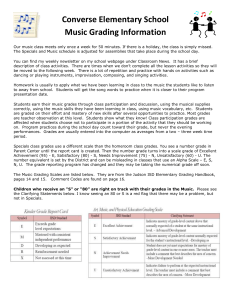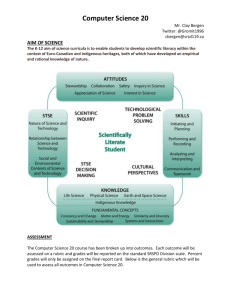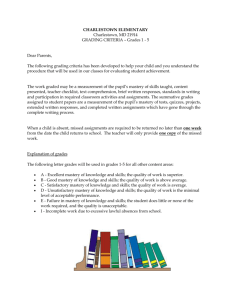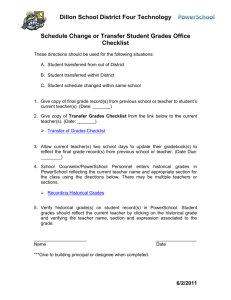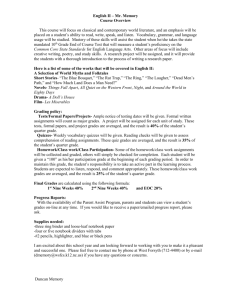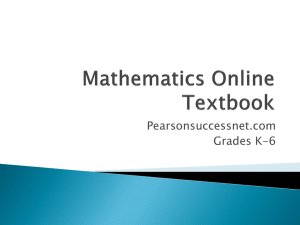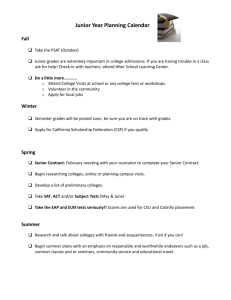Basic Math Facts Grades 1-5
advertisement
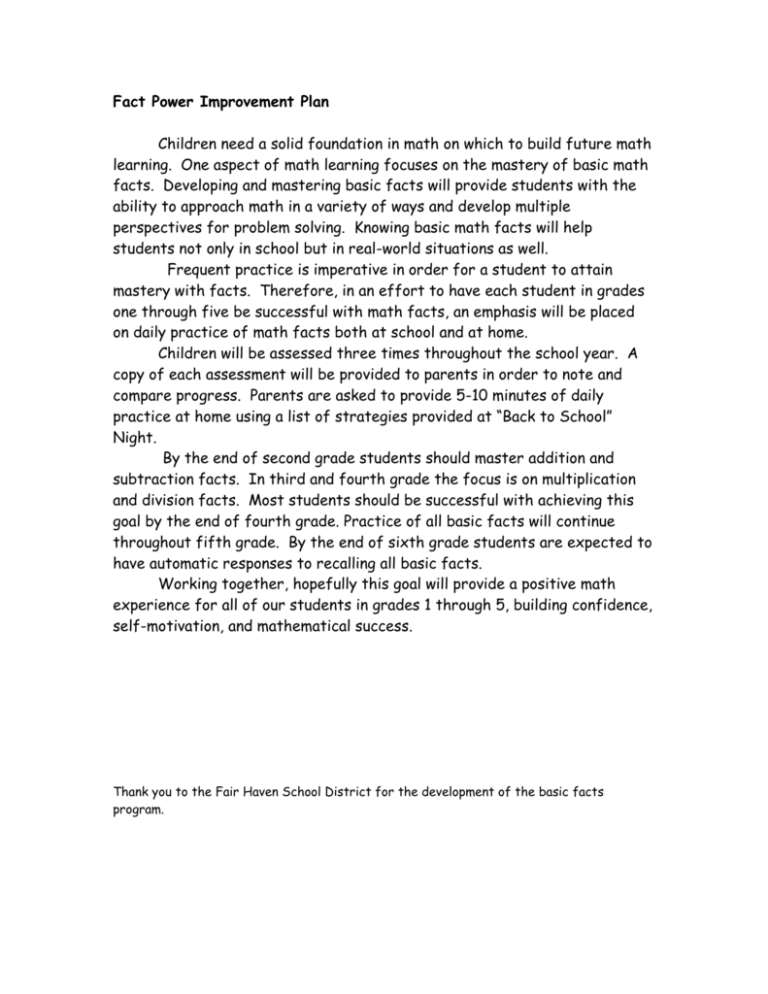
Fact Power Improvement Plan Children need a solid foundation in math on which to build future math learning. One aspect of math learning focuses on the mastery of basic math facts. Developing and mastering basic facts will provide students with the ability to approach math in a variety of ways and develop multiple perspectives for problem solving. Knowing basic math facts will help students not only in school but in real-world situations as well. Frequent practice is imperative in order for a student to attain mastery with facts. Therefore, in an effort to have each student in grades one through five be successful with math facts, an emphasis will be placed on daily practice of math facts both at school and at home. Children will be assessed three times throughout the school year. A copy of each assessment will be provided to parents in order to note and compare progress. Parents are asked to provide 5-10 minutes of daily practice at home using a list of strategies provided at “Back to School” Night. By the end of second grade students should master addition and subtraction facts. In third and fourth grade the focus is on multiplication and division facts. Most students should be successful with achieving this goal by the end of fourth grade. Practice of all basic facts will continue throughout fifth grade. By the end of sixth grade students are expected to have automatic responses to recalling all basic facts. Working together, hopefully this goal will provide a positive math experience for all of our students in grades 1 through 5, building confidence, self-motivation, and mathematical success. Thank you to the Fair Haven School District for the development of the basic facts program. Basic Math Facts Why are we addressing this topic? To help your child increase his or her level of proficiency with basic math facts, we have established a set of clear expectations for each grade level. Keep in mind that while basic math fact power is very important it is only one aspect of the total math picture. How will my child’s progress be assessed? Individual assessments will occur three times per year. A baseline assessment will be conducted in early September followed by midyear and end of year assessments. The results of your child’s progress will be sent home after each assessment period. How do I interpret the results of my child’s assessment? There are three performance categories as follows: Beginning: Your child took longer than three seconds to respond or gave the wrong response (grades 1-2). Developing: Your child was able to respond in two seconds or less and it was correct (grades 1-2) or the fact was incorrect or left blank (grades 3-5). Secure: Your child was able to respond in one second or less and it was correct (grades 1-2) or the fact was answered correctly (grades 3-5). How can I help my child at home? Review the assessment results with your child and celebrate your child’s successes. Help your child to practice and learn the facts in the beginning and developing categories using strategies that have been suggested. Dear Parents/Guardians, Attached is the basic fact assessment that was recently administered to your child. Please take some time to review the results with your child. Compliment your child for the facts that he or she knows and practice the facts that your child is still developing. First and second grade students were given an oral assessment. The following categories were used: Beginning: Your child took longer than three seconds to respond or gave an incorrect response. Developing: Your child was able to answer in approximately two seconds and it was correct. Secure: Your child was able to answer in one second or less and it was correct. Third, fourth, and fifth grade students were given a ten minute written assessment. The following categories were used: Developing: Your child answered incorrectly or left the response blank. Secure: Your child responded correctly to the fact. Facts in the “Beginning” and “Developing” columns should be reinforced using the strategies provided at “Back to School” Night. Please remember that short frequent intervals of practice (5-10 minutes) are most effective. Do not forget to periodically review secure facts so that your child continues to show mastery with those facts as well. Thank you for your help and support in ensuring that your child develops basic math fact power. Your work at home truly makes a difference. Sincerely, Karen A. Vitro Math Content Specialist vitrok@millstone.k12.nj.us



